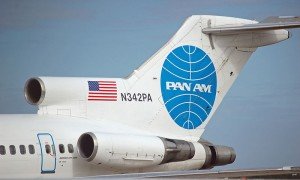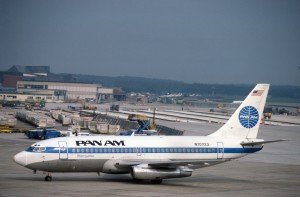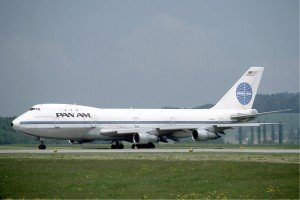 On 4th December 1991 the world lost one of the most significant airlines to ever grace the skies – Pan American World Airways, or Pan Am for short.
On 4th December 1991 the world lost one of the most significant airlines to ever grace the skies – Pan American World Airways, or Pan Am for short.
Founded in 1927 as Pan American Airways, the airline was taken over by the enterprising Juan Trippe – a former US Navy Reserve bomber pilot who had become obsessed with aviation, and been involved in a number of early startup airlines.
It went on to dominate routes across the Caribbean, Latin America and South America, taking over local airlines to fly its growing network. It famously flew flying boat ‘Clippers’ – inspiring the practice of naming each aircraft in the fleet after a Clipper.

During the 1940s emphasis turned away from seaplanes with the addition of Boeing 377 Stratocruisers, Douglas DC-3s, and DC-4s, and Lockheed Lodestars. The wartime requirements led to the development of a number of long distance routes which truly set the airline up for its future round-the-world coverage. These included DC-4 routes to Iran and Russia via South America and Africa, and also to Curtiss C-46 routes to China via India.
Given the enormous pressure to keep up with competitors both in the USA and Europe, Pan Am felt it needed to be an early adopter of the jet age. It became the launch customer of the Boeing 707, ordering 20 examples in October 1955, and also ordered 25 Douglas DC-8s. The 707 arrived first, entering service to London on 26 October 1958. The airline became a truly global brand as the 1960s passed, and soon the airline’s next most significant moment came when Trippe put the entire company on the line in order to purchase 25 of Boeing’s new ‘jumbo’ airliner, the 747, on 13 April 1966.
 An early development by Trippe, and Pan Am, was the development of the business jet. The Dassault Falcon 20 was acquired as a lower-cost means of business travellers reaching destinations not served by airlines at their own requested times.
An early development by Trippe, and Pan Am, was the development of the business jet. The Dassault Falcon 20 was acquired as a lower-cost means of business travellers reaching destinations not served by airlines at their own requested times.
A series of unfortunate incidents in the 1980s signalled the beginning of the end for Pan Am. First, the airline’s financial situation had begun to worsen, and the airline’s new president started selling off assets in order to reduce the mounting debt. Then, on 21 December, 1988, Boeing 747-121 N739PA Clipper Maid of the Seas was bombed over Lockerbie, Scotland, killing all aboard.
Two years later the 1990-91 Persian Gulf War took its toll on the world, and the impact on fuel prices and demand for air travel, proved to be the final nail in the coffin for Pan Am.
Although a number of reincarnations have appeared over the past 22 years, all wearing the familiar blue titles and globe logo, none have managed to recapture the spirit of the airline, or even succeed.
 I flew Pan Am on two flights, both operated by Boeing 727-200 aircraft, on the Miami-Nassau route, and remember them with affection. I also remember seeing the huge Boeing 747s with the billboard titles at London Heathrow as a child, and still find it very sad that the airline failed.
I flew Pan Am on two flights, both operated by Boeing 727-200 aircraft, on the Miami-Nassau route, and remember them with affection. I also remember seeing the huge Boeing 747s with the billboard titles at London Heathrow as a child, and still find it very sad that the airline failed.
Extracts from this piece are taken from my book Airlines of the USA, available here.




1 comment
The closing was unfortunate but Pan Am is a leading provider of simulator-based flight training to commercial airlines and professional pilots and will be able to offer world class professional pilot training programs for airlines. So they are still here in a way.